| Morphology of Flowering Plants Refresher Course |
| Morphology of Flowering Plants Concepts Files |
| Morphology of Flowering Plants Master Files |
| Morphology of Flowering Plants Notes 1 |
| Morphology of Flowering Plants Note 2 |
Morphology of Flowering Plants
Table of Content
- Introduction to Morphology of Flowering Plants
- The Root
- The Stem
- The Leaf
- The Flower
- The Fruit
- The Seed
- Floral Diagram and Floral Formula
Introduction to Morphology of Flowering Plants
The “morphology” word is from the Ancient Greek ‘morphe’ meaning “form” and ‘logos’, meaning “word, study, research”. Morphology is the study of the external form and the internal structure of plants and the ontogenic development of the plant body as a whole and of its member.
The morphology of vascular plants echoes their evolutionary history as being terrestrial organisms that occupy and draw resources from two very diverse environments- underneath the ground and above the ground. They must absorb water and minerals from below the ground surface and CO2 and light from above ground surface.
The ability to acquire these resources efficiently is traceable to the evolution of roots, stems and leaves as the three basic organs. These basic organs form a root system (which develops from radicle of the germinating seed) and a shoot system (which develops from the plumule of the germinating seed).
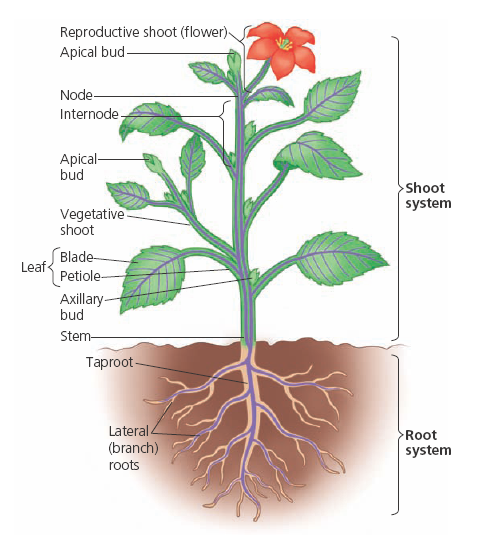
Figure (A): An overview of a flowering plant
The ability to acquire these resources efficiently is traceable to the evolution of roots, stems and leaves as the three basic organs. These basic organs form a root system (which develops from radicle of the germinating seed) and a shoot system (which develops from the plumule of the germinating seed).
The Root
The root is an organ which anchors a plant (vascular) in the soil and absorbs sap (minerals and water), and more often stores carbohydrates and other reserves.
In most of the dicot plants, the elongation of the radicle (primitive form of root) leads to the formation of primary roots which grows inside the soil. Further branching of the primary roots form secondary or lateral roots.
Tap root system: The primary roots and its branches make the tap root system. Tall, erect plants with large shoot regions generally have a tap root system which consists of one vertical root, taproot, which usually develops from the primary root and which helps in preventing the plant from toppling. For example, the mustard plant.
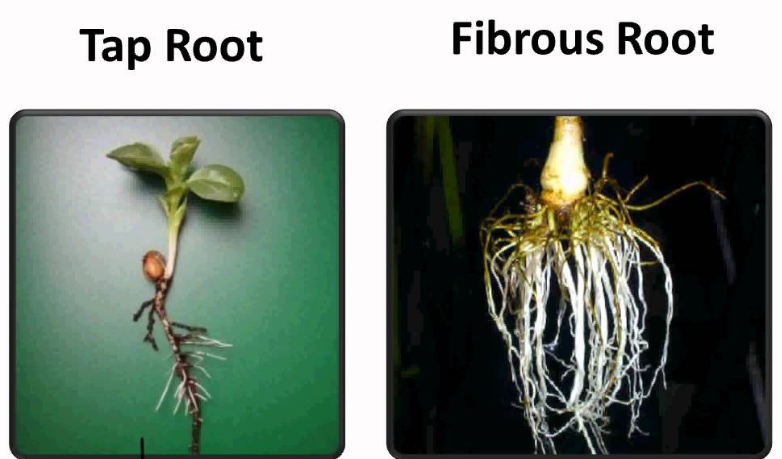
Figure (B): Tap root and fibrous root
Fibrous Root System
In monocot plants, the primary root is replaced by a large number of roots. These roots originate from the base of the stem and makes up the fibrous root system.
In plants that have fibrous root system, the primary root dies early on and does not form a taproot. Instead, many small roots emerge from the stem and these roots are called adventitious.
Modification of Root
The roots of many plants are adapted for specialized functions. They can change their shape and structure and become modified to perform special functions other than absorption and conduction of water and minerals.
For support
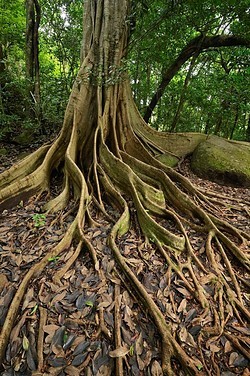
Figure (C): Buttress roots of Gyranthera caribensis
Root systems of many of the tallest trees are surprisingly shallow due to moist conditions in the tropics. Some aerial roots that look like buttress, give the structural support to the trunks of trees. Stilt roots are the aerial adventitious roots of maize are prop roots, so named because they support tall, top-heavy plants.
Prop roots, the hanging structures that support Banyan tree.
For storage of food
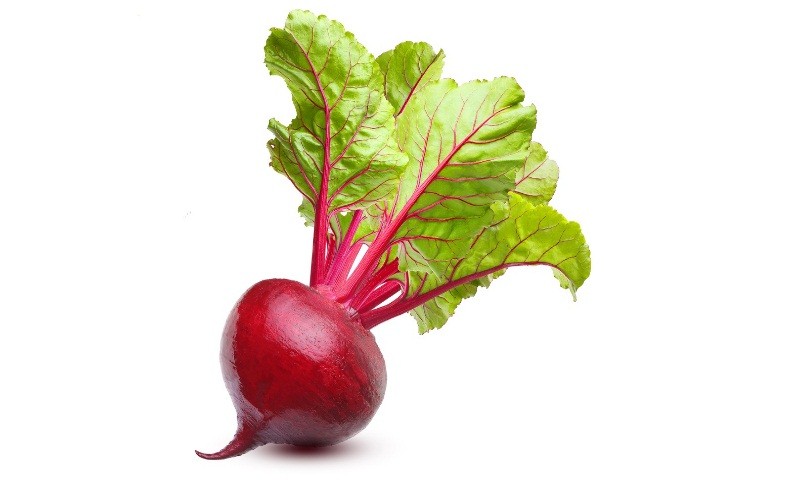
Figure: Beetroot with leaves
Tap roots of turnip, carrot and the adventitious roots of sweet potato, get swollen and store food.
For respiration
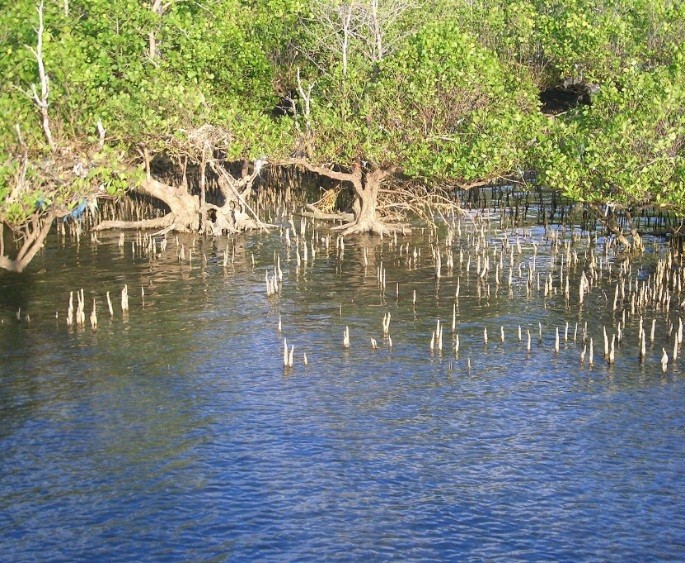
Figure (D): Mangrove pneumatophores
Pneumatophores (figure D), also known as air roots. Mangrove trees produces pneumatophores whose habitats are tidal swamps. They arise out of the ground and grow straight upwards, that help to get oxygen.
The Stem
A stem is plant organ which bears leaves and buds. It matures from the plumule of the embryo of a germinating seed and bears nodes and internodes.
The chief function of the stem is to elongate and position the shoot in a way that maximize photosynthesis by the leaves. It also elevates the reproductive structures, thus facilitating the dispersal of pollen and fruit.
Modification of Stem
Some plants have stems with alternative functions, such as food storage or asexual reproduction. Many of these modified stems (refer figure E), including rhizomes, stolon, and tubers are often mistaken for roots, although they are modified forms of shoot.
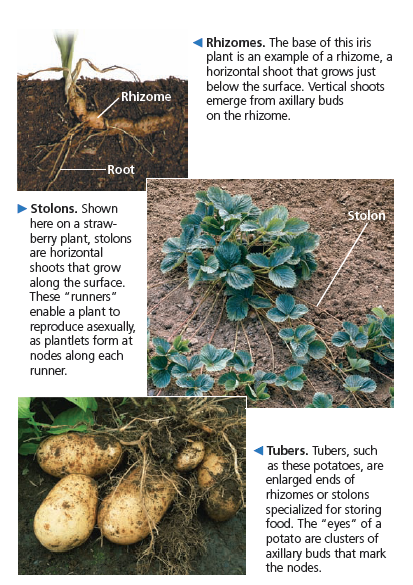
Figure (E): Evolutionary adaptation of stems
The Leaf
The leaf is the main photosynthetic organ in most of the vascular plants. In addition to capturing light, it also exchanges gases with the atmosphere, disperse heat, and defend themselves from herbivores and pathogens.
Leaves grow at the node and bears a bud in its axil. Later on, the axillary bud develops into branch. They originate from the apical meristems and arranged in an acropetal order.
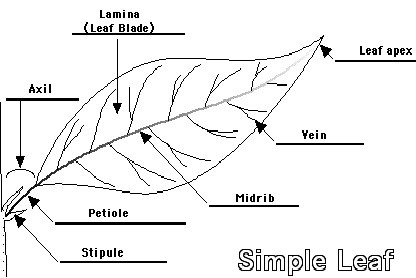
Figure (F): Morphological features of a leaf
A leaf consists of flattened blade or lamina and a stalk, the petiole (which join the leaf to the stem at a node). The arrangement of Veins (the vascular tissue of the leaf) differ in monocots and dicots. The monocots have parallel chief veins of equal diameter that run the length of blade (parallel venation). In dicot, they have a branched network of veins arising from the midrib (reticulate venation).
The phyllotaxy is the pattern of arrangement of leaves on the stem or branch. It is further categorized into alternate, opposite and whorled type.
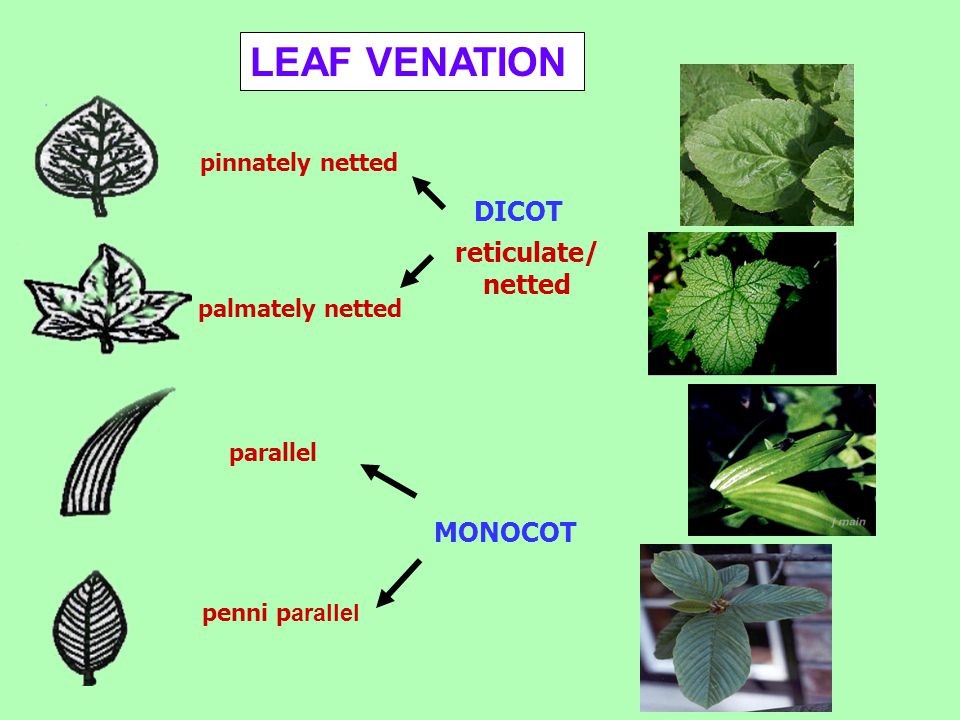
Figure (G): venation types in different types of leaves
Modification of Leaves
Almost all leaves are specialized for photosynthesis. However, some species have leaves with adaptations that enable them to perform additional functions such as support, protection, storage, or reproduction. The morphological features of leaves are often product of genetic programs that are tweaked by environmental influences.
They are transformed into tendrils for climbing as in peas or into spines for protection as in cacti. The fleshy leaves of onion and garlic store food.
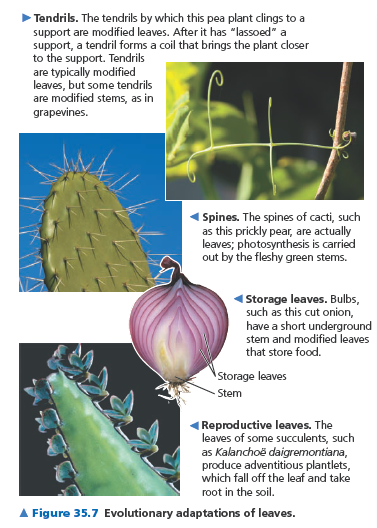
Figure (H): Modification of leaves
In some insectivorous plants such as pitcher plant, Venus-fly trap, the leaves are also modified to perform special functions.
The Flower
A flower is a revised shoot in which the shoot apical meristem changes to floral meristem.
The apex produces different kinds of floral accessories laterally at sequential nodes instead of leaves. When the shoot tip transforms into flower, it is always solitary.
Flower is the reproductive unit in the angiosperms.
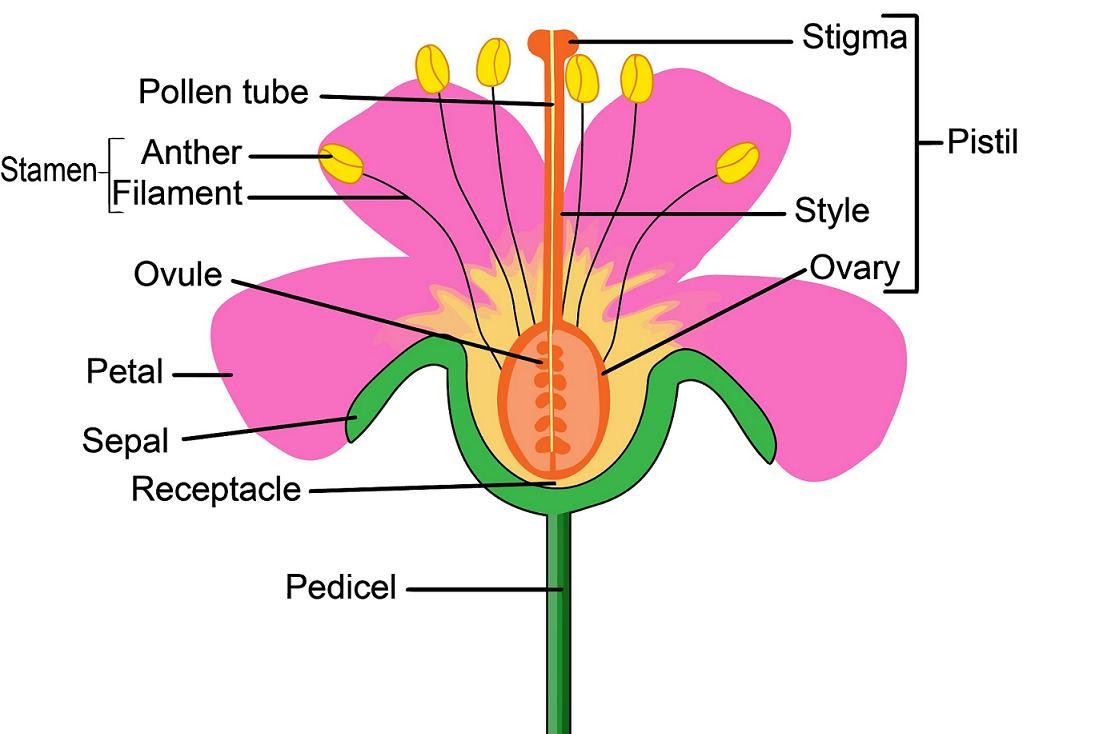
Figure (I): Parts of flower
The characteristic stalk supporting the flower is known as pedicle. The swollen and enlarged upper part of the pedicel is known as receptacle/thalamus and floral leaves are present on it.
The flower normally has four floral whorls, viz. calyx, corolla, androecium and gynoecium.
- Calyx: The outermost whorl of the flower and the members are called sepals. When sepals are fused they are known as gamosepalous, whereas when sepals are free they are known as polysepalous.
- Corolla: Corolla is composed of petals. To attract insects for pollination petals are usually brightly colored. Gamopetalous is the condition of fused petals and the free petals are known as polypetalous.
- Aestivation: The mode of arrangement of sepals or petals in floral bud with respect to the other members of the same whorl is known as aestivation.
- Androecium: Androecium is the group of stamens. Each stamen (male reproductive organ) which consists of a stalk/filament and an anther.
- Gynoecium: Gynoecium is the female reproductive part and is composed of one or more carpels. The three parts of carpel are stigma, style and ovary.
- Inflorescence: The arrangement pattern of flowers on the axis of flower is termed as inflorescence.
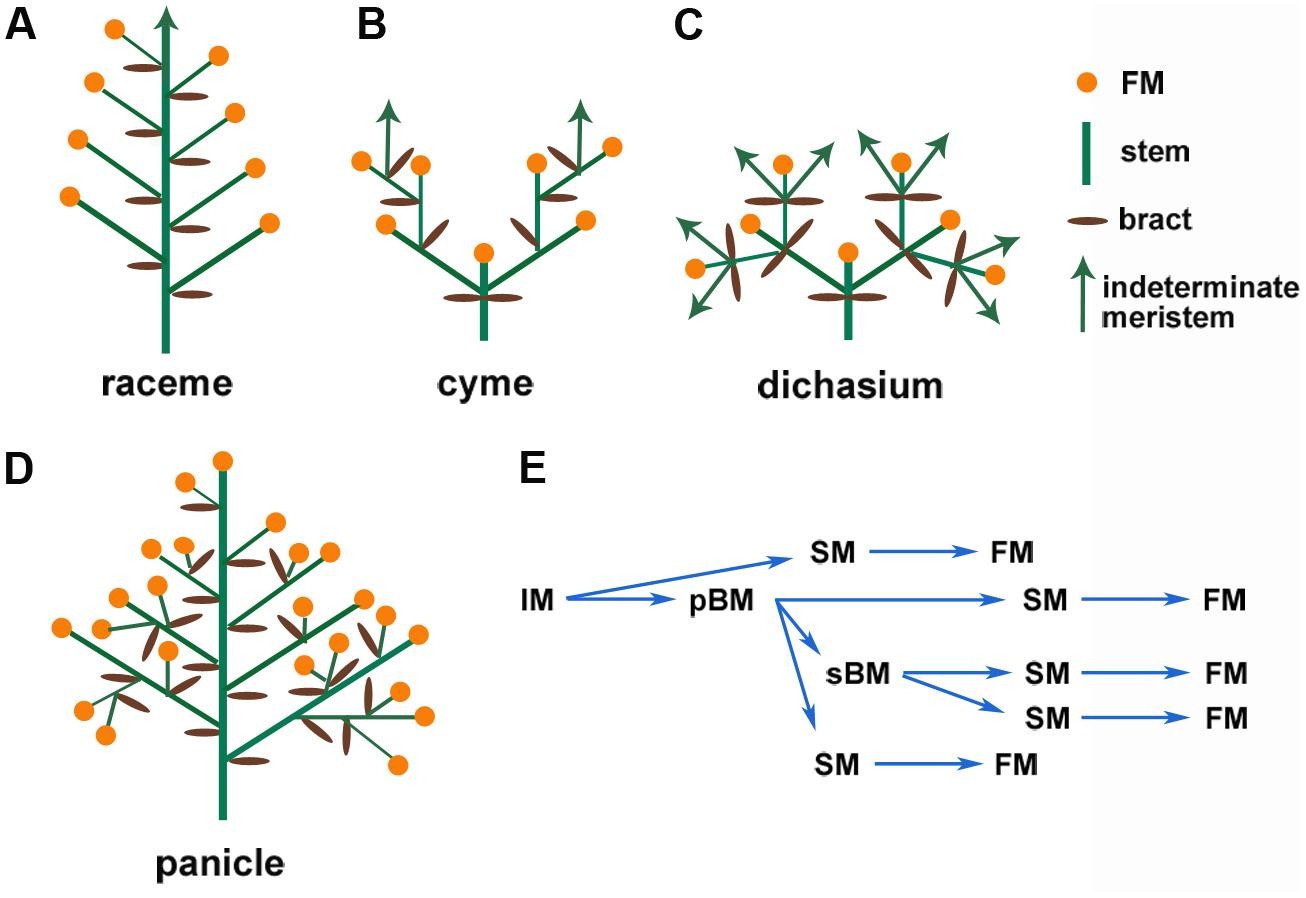
Figure (J): Types of inflorescence
The Fruit
The fruit is the characteristics feature of the angiosperm. It is a mature ovary, developed after fertilization. When the fruit is formed without fertilization of the ovary, it is called Parthenocarpic fruit.
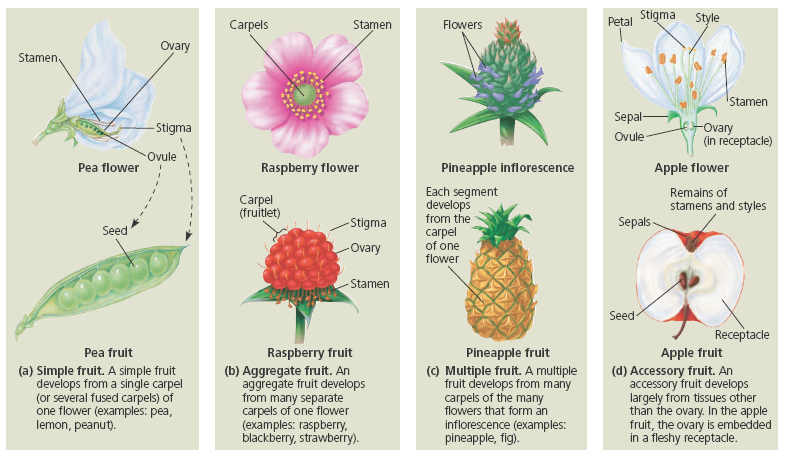
Figure (K): Developmental origin of different classes of fruits
During fruit development, the ovary wall becomes the pericarp, the thickened wall of the fruit. In some fruits (soybean pods), the ovary wall dries out completely at maturity, whereas in other fruits, such as grapes, it remains fleshy.
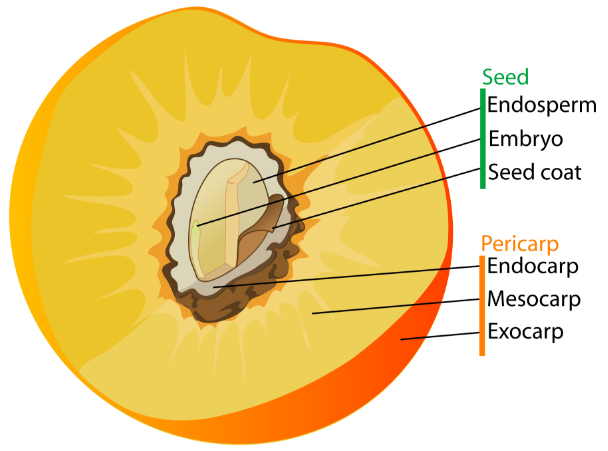
Figure (L): Parts of fruits
The Seed
The ovule after fertilization, develops into seeds.
Seed Composition: Seed coat and an embryo. The embryo is made up of a radicle, an embryonal axis and one or two cotyledons.
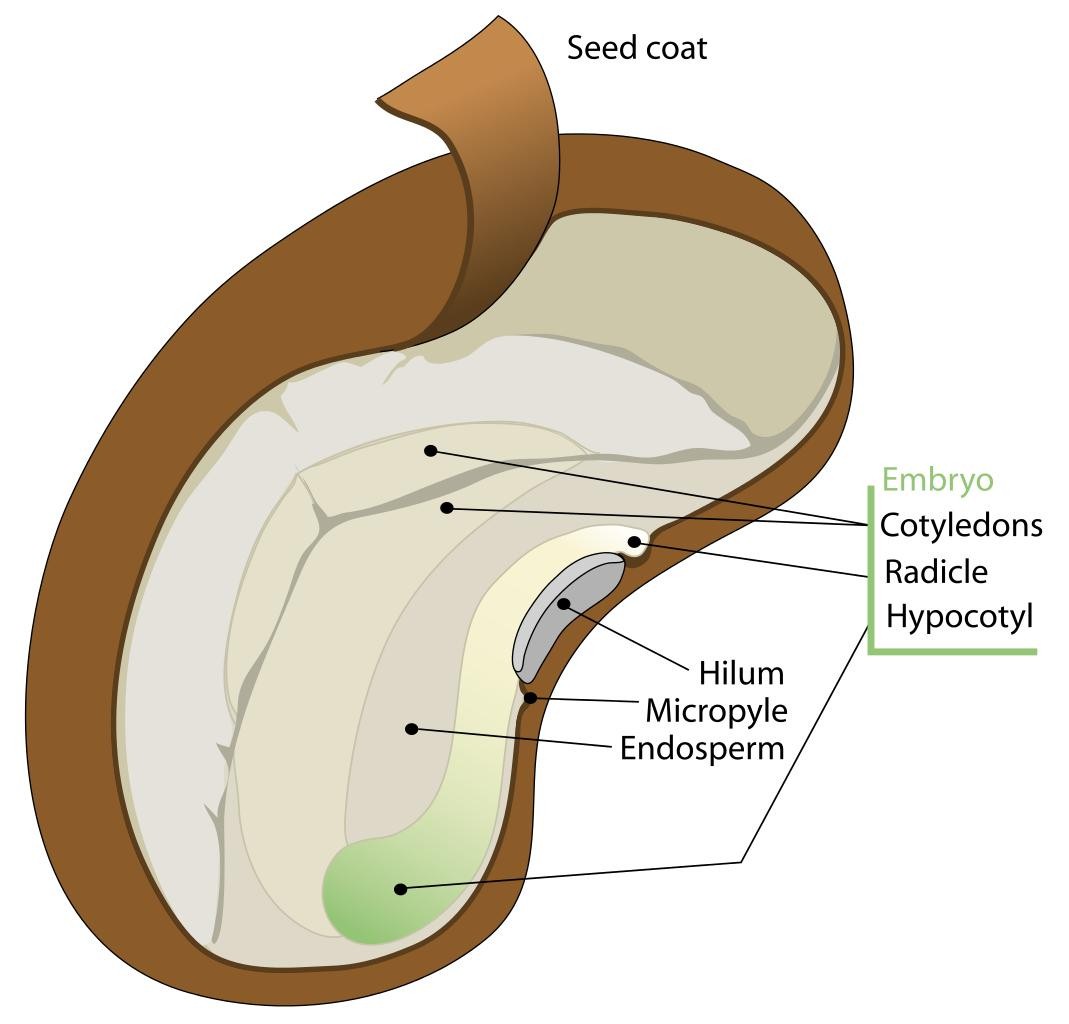
Figure (M): Common garden pea (eudicot)
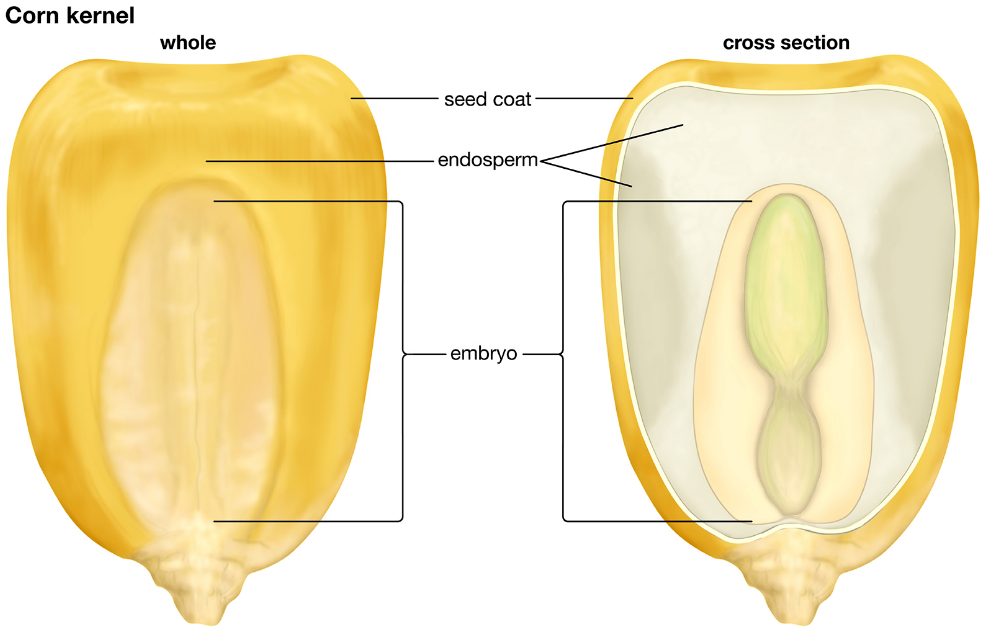
Figure (N): Maize, a monocot
Floral Diagram and Floral Formula
To describe a flowering plant, there is need of various morphological features. Reason behind the need is to provide description in brief and in simple sequence.
The plant is described by its habit, vegetative characters and then floral characters’ inflorescence and flower parts.
A floral diagram and a floral formula is presented using some symbols, after describing various plant parts.
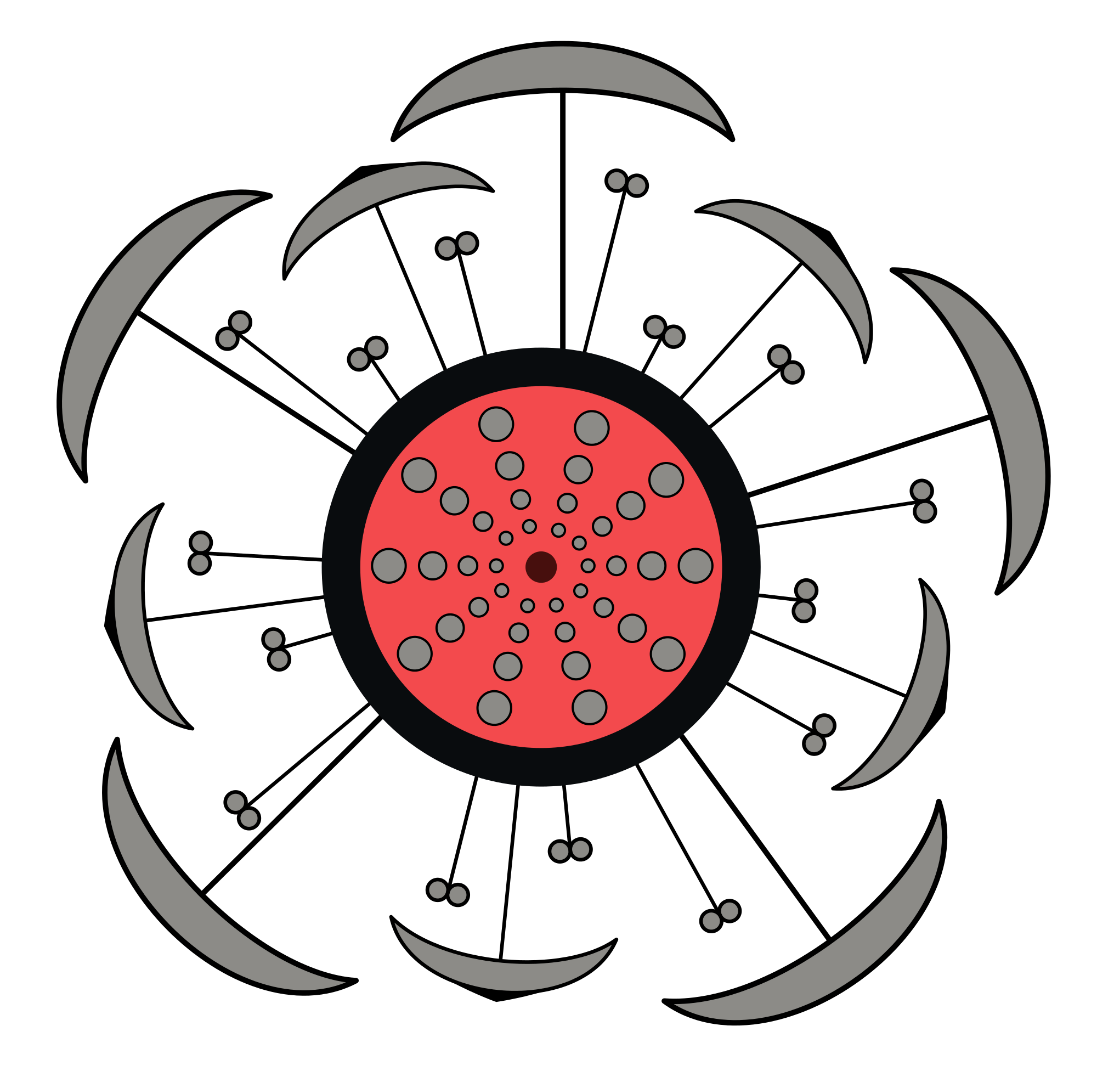
Figure (O): Floral diagram of Hibiscus
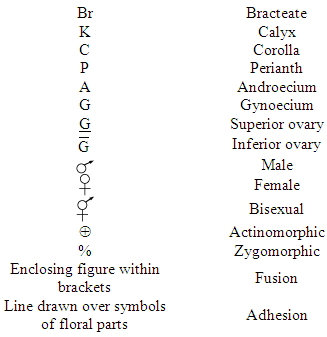
Figure (P): Symbols and their description in floral formula